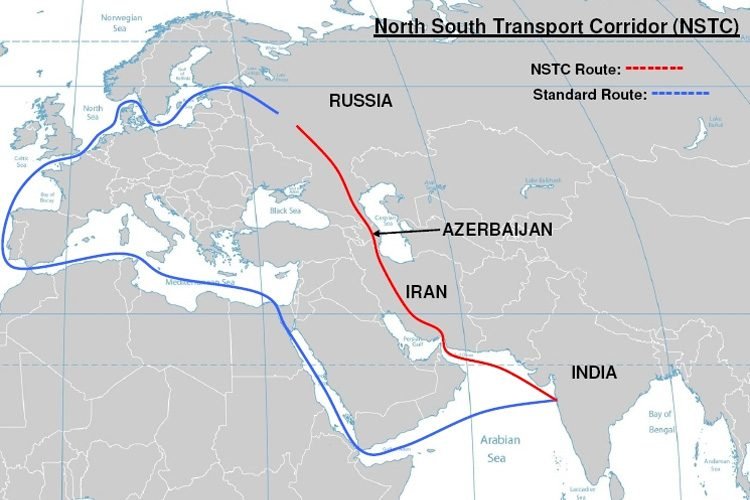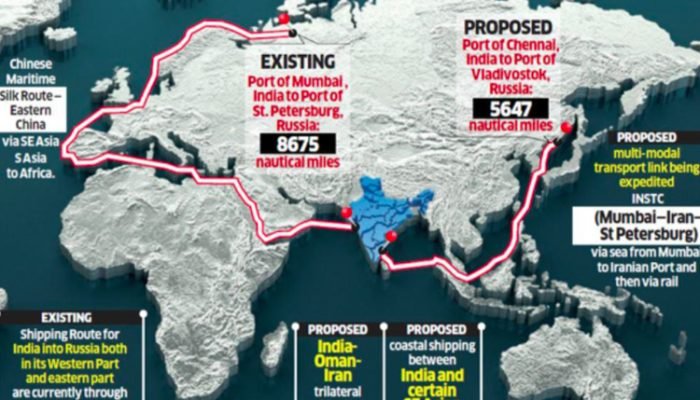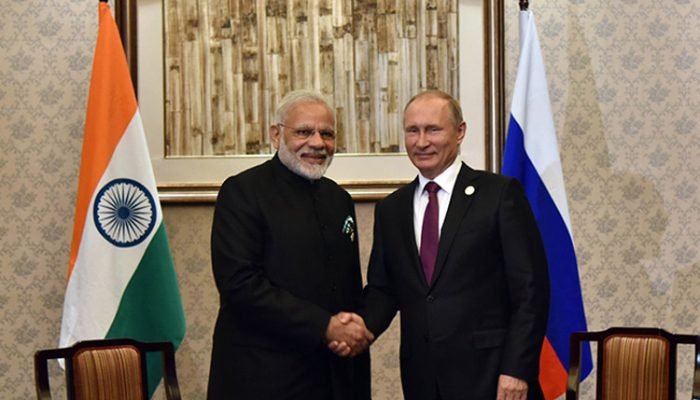The North-South Transport Corridor, a modern infrastructure project, ratified by 13 countries namely, Azerbaijan, Belarus, Bulgaria, Armenia, India, Iran, Kazakhstan, Kyrgyzstan, Oman, Russia, Tajikistan, Turkey, and Ukraine, has a long-standing historical cultural connection that has contributed to shaping the economic and cultural landscape of the regions involved. The historical significance of the route can be traced back to the time of the Safavid dynasty, the ruling dynasties of Persia (modern Iran) from 1501 to 1736. This route had been used by Europeans, Indians and many foreign travellers since antiquity. The current project was initiated by Russia, India and Iran in September 2000 in St. Petersburg with the intention to provide a multi-modal transportation route linking the Indian Ocean and Persian Gulf to the Caspian Sea via Iran and then on to northern Europe via St. Petersburg in Russia.

The North-South Transport Corridor (NSTC) is a crucial transportation route that aims to connect the countries of India, Iran, and Russia, along with other participating nations in Central Asia and Europe. This ambitious project has the vision to establish an efficient and cost-effective multimodal transport network wherein trade and connectivity improves between the regions involved. The NSTC has immense potential to transform regional dynamics by enhancing trade, promoting development, and strengthening geopolitical ties. It will transverse multiple modes of transport, including maritime, rail, and road, spanning over 7,200 kilometers. It will begin from the Indian port of Mumbai, moving through Iran’s Bandar Abbas port, and will extend further into the Caspian sea, reaching the Russian port of Astrakhan. From there, it will connect to various European destinations, opening up new trade routes and reducing the dependence on traditional sea routes.
By fostering closer ties and taking advantage of geographical advantages that are poised to open up trade potential and strengthen bilateral ties, it seeks to increase connectivity and trade between India and Russia. The corridor, spanning thousands of kilometers, visions to create a strong logistics network, facilitating the seamless movement of goods and promoting economic cooperation.
The objective is to provide a direct and convenient link facilitating efficient transportation routes enabling businesses to expand their reach and diversifying trade opportunities. It will reduce transit time and costs, providing a direct and convenient link between the Indian subcontinent and the Eurasian region thereby unlocking new markets across borders and aiding in creating business prospects on
both ends. Ultimately, resulting in economic growth, job creation and mutual prosperity for India and Russia. The strategic position of India- the Russian Freight Corridor holds significant geopolitical importance beyond economic implications with an intention to strengthen political cooperation and regional stability. The corridor will serve as a crucial link as the prime objective is not only to strengthen the strategic partnership between India and Russia but also to provide a channel for fostering ties with South Asia. It can play a crucial role in integrating the kaleidoscopic structure of the two nations and integrating it in a more interconnected world by aligning their interests and leveraging their geographical positions.
In order to successfully establish India-Russia Freight Corridor substantial investment in infrastructure development is required. To ensure smooth and efficient movement of goods efforts are underway wherein the focus is to improve road, rail and maritime connectivity along the corridor. The key components of the initiatives are incorporating existing transportation networks, constructing new logistics hubs, and integrating digital technologies, providing a space for development in infrastructure, regional connectivity and other ancillary benefits such as attracting investments and spurring socio-economic development in the regions traversed by the corridor.


The North-South Transport Corridor emphasizes on multimodal connectivity, encompassing various transportation modes such as road, rail, sea, and air. This multimodal approach enhances the corridor’s efficiency and flexibility, enabling the seamless movement of goods across different transport networks.
While focusing on trade and connectivity, it is essential to address environmental concerns. The North-South Transport Corridor must incorporate sustainable practices and technologies to minimize its ecological impact. Embracing green logistics principles, optimizing fuel efficiency, promoting a modal shift towards railways and waterways, and adopting eco-friendly infrastructure solutions are crucial steps to reduce carbon emissions and mitigate environmental degradation. Balancing economic growth with environmental sustainability is vital for long-term success and to ensure the corridor’s positive impact on both nations and the planet.
In conclusion, the North-South Transport Corridor, a significant milestone in the bilateral relationship between India and Russia, has the potential to be a transformative transport corridor, it will enhance regional connectivity, trade, and economic development thereby promoting economic assimilation, strengthening geopolitical ties, and fostering cultural exchanges. It will aid as a channel that will reinforce strategic ties by harnessing the power of connectivity thereby laying the stone for a prosperous and interconnected future.